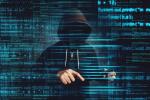Roots & Wings Online
- Homepage
- Communications
- Roots and Wings
- Technology
- Cybersecurity 101
TAC member, April Sather shares four steps you should take today to secure your data to promote cybersecurity.
 By April Sather, Member LARCS Technology Advisory Committee and Certified Information Systems Security Professional (CISSP)
By April Sather, Member LARCS Technology Advisory Committee and Certified Information Systems Security Professional (CISSP)
National Cybersecurity Awareness Month was introduced seventeen years ago. Since this campaign launched, the frequency and severity of cyberattacks have grown exponentially. While mega breaches and some cyber incidents lie outside our sphere of control, far more lies within. Individuals have access to more powerful, and affordable, technical protections than ever before – the trick is, to use them.
Whether your concern is protecting your digital identity and reputation, preventing financial loss, protecting private information, physical safety, or something else, take a few hours this month to check in on your cybersecurity hygiene.
Commit today to one, or ideally all of the following:
1) Use a Password Manager
LastPass, 1Password and Dash Lane are popular and affordable solutions – all cost less than half the cost of a Netflix subscription. Free versions are also available. Remember to make your master password, or ideally a pass phrase, exceptionally strong and complex. Then, memorize and protect it.
2) Enable Multi-factor Authentication (MFA)
The first factor is usually a password (something you know) and the second can be your cell phone or a hardware token (something you have). When a service you use has an option to add a second factor be sure to enable it. Examples of commonly used applications with MFA options are Gmail, Apple ID, and most online banking apps.
One downside of MFA is that if you lose your second factor, such as your cell phone, you lose the ability to access your account. It is therefore highly advisable to generate, and print, backup codes or add a second phone number.
3) Automatically Scan for Malware
4) Run Online and Offline Backups
While no single practice guarantees protection against cyber criminals and hackers, when used in combination, you create multiple layers of defense. What matters most are the simple steps we take, and daily choices we make. Do your part to protect your identity, personal information and data.
#BeCyberSmart




